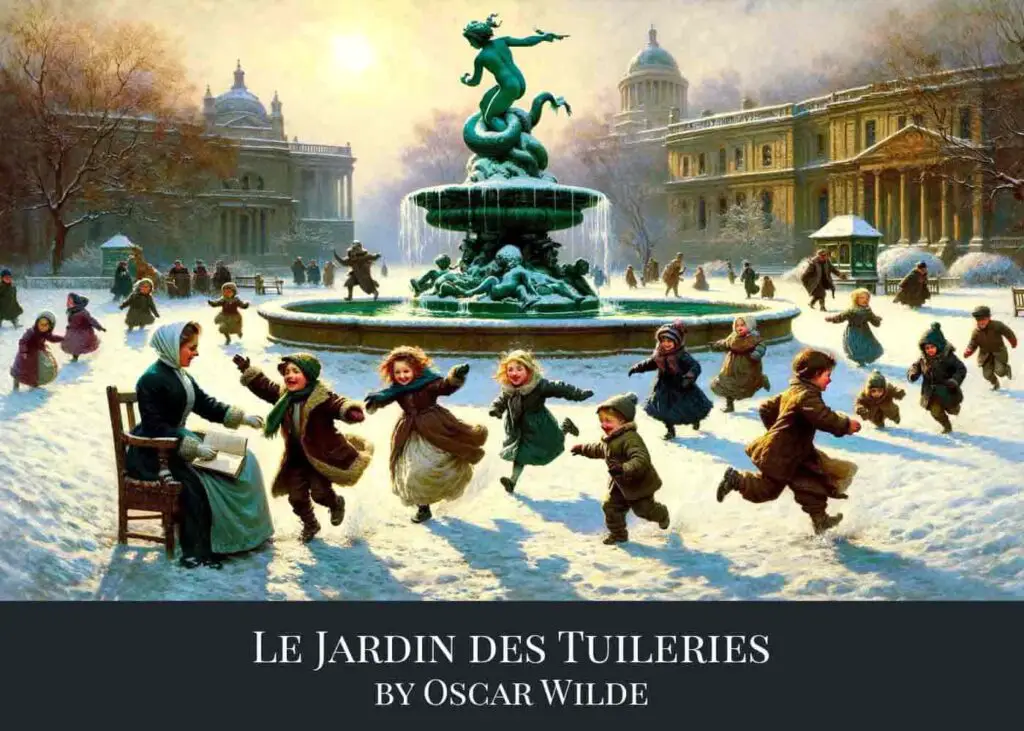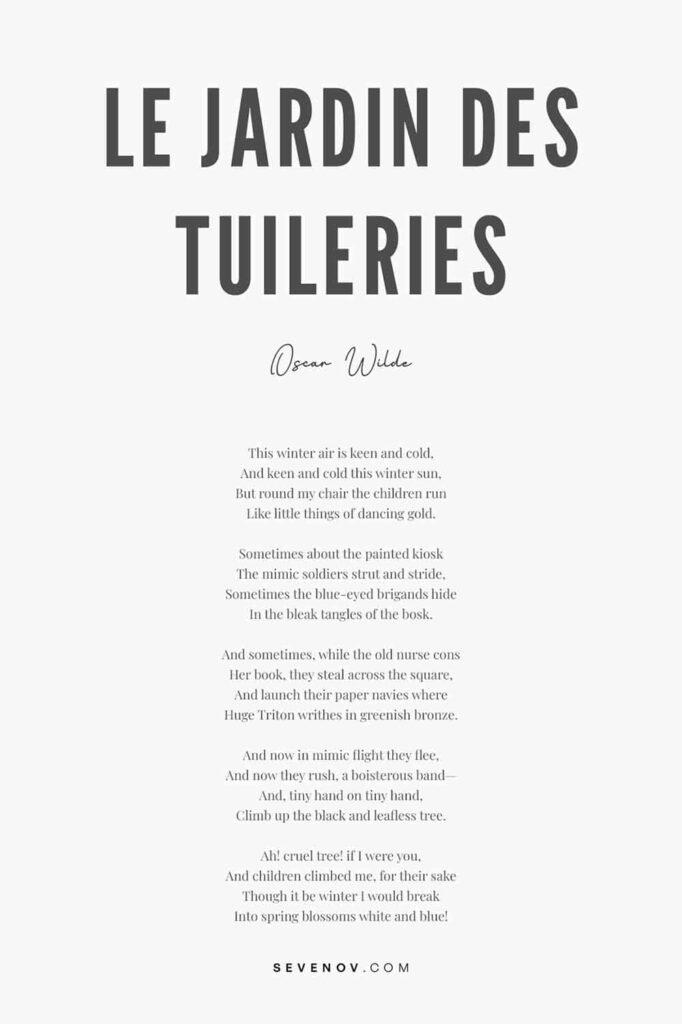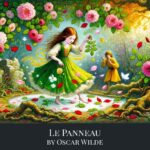
Le Jardin des Tuileries by Oscar Wilde
“Le Jardin des Tuileries” is a delightful poem by Irish playwright, writer, and poet Oscar Wilde, featured in his book Poems. This piece beautifully captures the vibrant life and playful energy of children in the Tuileries Garden, set against the backdrop of a cold winter day. For readers who wish to explore more of Wilde’s poetic works, Poems is available online at PageVio.
1. The Poem
This winter air is keen and cold,
And keen and cold this winter sun,
But round my chair the children run
Like little things of dancing gold.
Sometimes about the painted kiosk
The mimic soldiers strut and stride,
Sometimes the blue-eyed brigands hide
In the bleak tangles of the bosk.
And sometimes, while the old nurse cons
Her book, they steal across the square,
And launch their paper navies where
Huge Triton writhes in greenish bronze.
And now in mimic flight they flee,
And now they rush, a boisterous band—
And, tiny hand on tiny hand,
Climb up the black and leafless tree.
Ah! cruel tree! if I were you,
And children climbed me, for their sake
Though it be winter I would break
Into spring blossoms white and blue!

Download Le Jardin des Tuileries Poster
Size: 8″ x 12″ (2:3 ratio)
Format: PDF
Copyright information: For personal use only
Note: Actual poster background color is white. For the sample poster, the background is made gray for illustration purpose.
2. Le Jardin des Tuileries Analysis
“Le Jardin des Tuileries” captures the contrast between the cold, bleakness of winter and the vibrant, lively spirit of childhood. The speaker observes children playing outdoors in winter, their energy and joy starkly contrasting with the dormant nature around them.
The poem opens with a description of the cold winter air and sun, setting a scene of chill and stillness. However, this stillness is immediately contrasted with the lively activity of the children who run around the speaker’s chair “like little things of dancing gold.” This imagery creates a vivid picture of warmth and movement, suggesting the lively innocence and joy of childhood.
The children’s play is imaginative and varied: they pretend to be soldiers near a painted kiosk, hide as brigands in the tangled bushes (“bosk”), and play with paper boats in a fountain where a statue of Triton (a mythological Greek god of the sea) is situated. These scenes depict the children’s ability to transform the stark winter landscape into a playground for their adventures, showing the power of imagination to enliven and transform one’s surroundings.
In a moment of reflection, the speaker notes the children climbing a black, leafless tree. This image symbolizes the harshness of winter and the absence of natural beauty during this season. The speaker expresses empathy for the tree, wishing it could respond to the children’s playfulness by blossoming into spring flowers, despite it being winter. This wishful thinking highlights the speaker’s appreciation for the children’s vitality and perhaps a longing for the rejuvenation and beauty of spring.
The poem contrasts the harsh, lifeless aspects of winter with the lively, imaginative world of children. It celebrates the innocence and joy of childhood and the ability of the young to find happiness and adventure even in the most unlikely places. The speaker’s longing for the tree to blossom symbolizes a desire for the world to respond to and match the children’s joy and vivacity.
3. Conclusion
May the vivid scenes of ‘Le Jardin des Tuileries’ by Oscar Wilde, with its lively children and winter’s crisp air, captivate you. Discover more poetic artistry in our curated list of Oscar Wilde’s poems.




